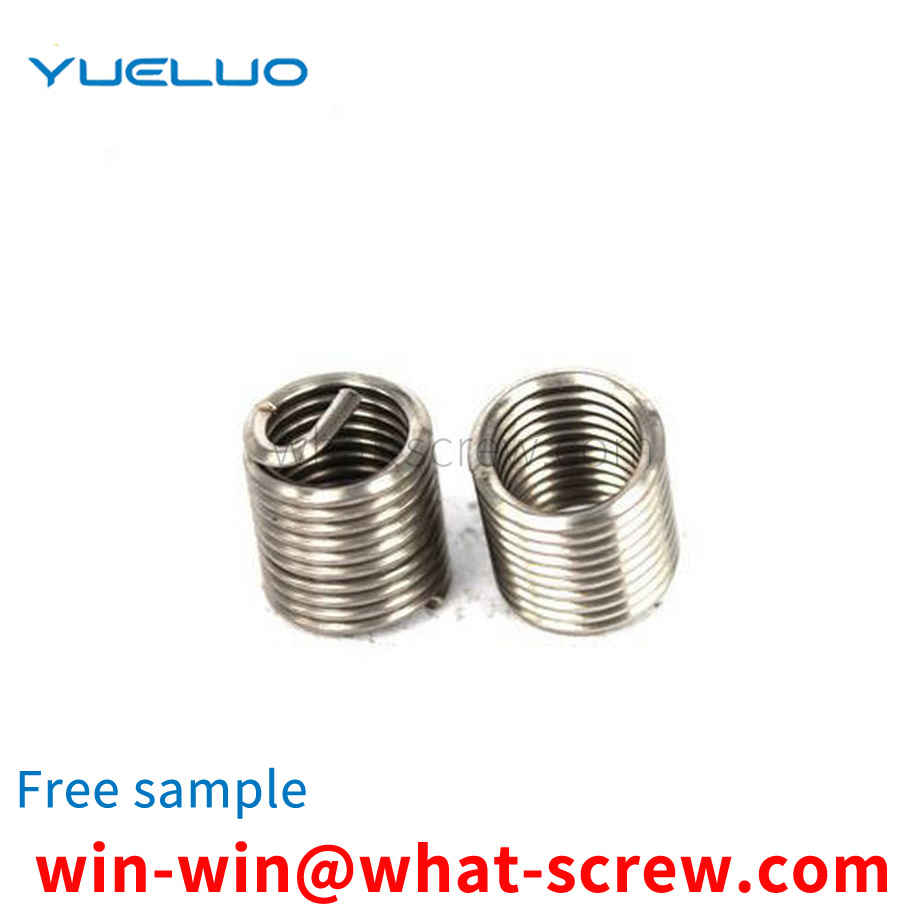Electrical contact element is a kind of low-voltage electrical products and household electrical products widely used in switches, relays, thermostats, circuit breakers, contactors, controllers, timers, etc. There are mainly three types of electrical contact elements. 1. Riveting parts , riveting the rivet on the copper piece; 2. Welding piece, welding the sheet contact on the copper piece; 3. Stamping piece, punching the composite tape into components. Existing rivet contacts on the market at present are usually all made of precious metals, such as a simple metal matrix such as gold or silver. Its electrical contact performance is limited by a single metal material, and its electrical contact performance is poor; and due to certain requirements for metal purity in production, production efficiency is low, and production costs are high, resulting in the production of products that cannot be sold on a large scale in the market. and application.
Commonly used standards are broadcast. For hexagonal nuts, the commonly used standards are: GB52, GB6170, GB6172 and DIN934. The main differences between them are: the thickness of GB6170 is thicker than that of GB52, GB6172 and DIN934, commonly known as thick screw cap. The other is the difference between the opposite sides, the opposite sides of DIN934, GB6170 and GB6172 in the M8 nut series are 13MM smaller than the opposite side 14MM of GB52, and the opposite sides of M10 nuts, DIN934 and GB52 are 17MM. The opposite side of GB6170 and GB6172 should be 1MM larger, M12 nut, DIN934, GB52's opposite side is 19MM larger than GB6170 and GB6172's opposite side 18MM is 1MM larger. For M14 nuts, the opposite side of DIN934 and GB52 is 22MM, which is 1MM larger than the opposite side of GB6170 and GB6172, which is 21MM. The other is the M22 nut. The opposite side of DIN934 and GB52 is 32MM, which is 2MM smaller than the opposite side of GB6170 and GB6172, which is 34MM. (Besides the thickness of GB6170 and GB6172 are the same, the width of the opposite side is exactly the same) The rest of the specifications can be used in general without considering the thickness.
The traditional gasket is a single-piece gasket that works independently. This gasket mainly relies on friction to achieve the anti-loosening effect. The new washer is composed of two pieces. Its unique embedded structure changes the way that the traditional washer mainly achieves anti-loosening through friction. Instead, it adopts the most advanced anti-loosening technology in the world and uses the tension between the two gaskets to achieve. The dual effect of anti-loosening and tightening.
The spring washer usually includes a washer body and a raised claw head punched and formed on the washer body. The spring washer is often placed between the bolt head of the bolt and the connected parts, wherein the raised claw head is connected to the part to be connected. The surfaces of the connecting parts are in contact, and the plane on the gasket body, opposite to the lifting direction of the raised claw head, is in contact with the bolt head. After the bolt head is tightened, the elastic reaction force generated by the raised claw head after flattening makes the The screwed threads are pressed tightly, and at the same time, the raised claw head is pressed against the bolt head and the supporting surface of the connected parts, which has the effect of preventing loosening. However, the traditional spring washer is a single-claw type. When tightening, the raised claw head will cause great damage to the surface of the connected parts, so it is not suitable for the anti-loosening treatment of parts with small surface hardness.
For hexagonal nuts, the commonly used standards are: GB52, GB6170, GB6172 and DIN934. The main differences between them are: the thickness of GB6170 is thicker than that of GB52, GB6172 and DIN934, commonly known as thick nuts. The other is the difference between the opposite sides, the opposite sides of DIN934, GB6170 and GB6172 in the M8 nut series are 13MM smaller than the opposite side 14MM of GB52, and the opposite sides of M10 nuts, DIN934 and GB52 are 17MM. The opposite side of GB6170 and GB6172 should be 1MM larger, M12 nut, DIN934, GB52's opposite side is 19MM larger than GB6170 and GB6172's opposite side 18MM is 1MM larger. For M14 nuts, the opposite side of DIN934 and GB52 is 22MM, which is 1MM larger than the opposite side of GB6170 and GB6172, which is 21MM. The other is the M22 nut. The opposite side of DIN934 and GB52 is 32MM, which is 2MM smaller than the opposite side of GB6170 and GB6172, which is 34MM. (Besides the thickness of GB6170 and GB6172 are the same, the width of the opposite side is exactly the same) The rest of the specifications can be used in general without considering the thickness.
We have many years of experience in the production and sales of screws, nuts, flat washers, etc. The main products are: galvanized blind rivets, GB5780 national standard full-tooth screws, butterfly thumb screws, galvanized solid rivets and other products, we can provide you with suitable products Your fastener solution.



















 Service Hotline
Service Hotline




